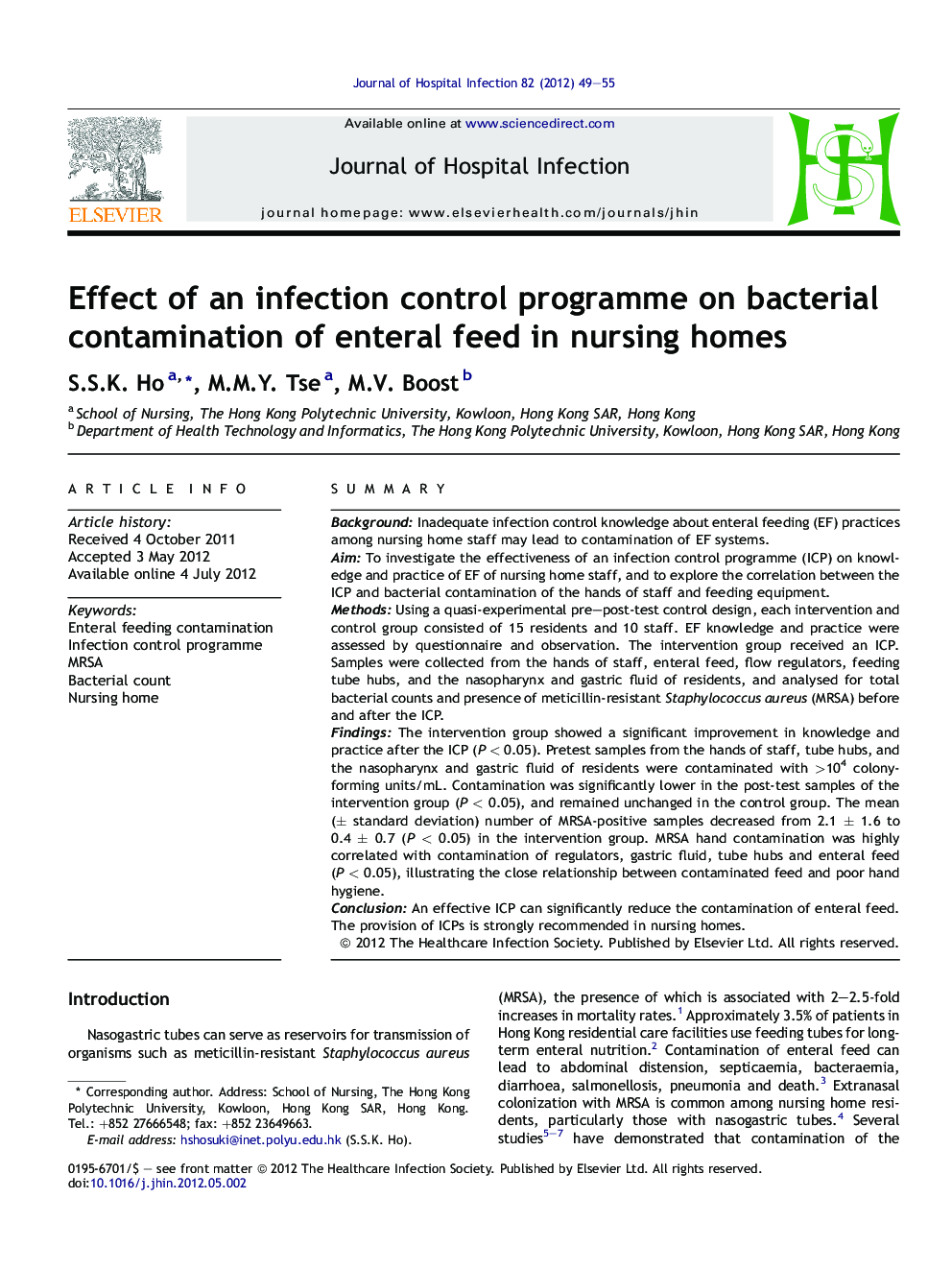| کد مقاله | کد نشریه | سال انتشار | مقاله انگلیسی | نسخه تمام متن |
|---|---|---|---|---|
| 3371865 | 1219231 | 2012 | 7 صفحه PDF | دانلود رایگان |

SummaryBackgroundInadequate infection control knowledge about enteral feeding (EF) practices among nursing home staff may lead to contamination of EF systems.AimTo investigate the effectiveness of an infection control programme (ICP) on knowledge and practice of EF of nursing home staff, and to explore the correlation between the ICP and bacterial contamination of the hands of staff and feeding equipment.MethodsUsing a quasi-experimental pre–post-test control design, each intervention and control group consisted of 15 residents and 10 staff. EF knowledge and practice were assessed by questionnaire and observation. The intervention group received an ICP. Samples were collected from the hands of staff, enteral feed, flow regulators, feeding tube hubs, and the nasopharynx and gastric fluid of residents, and analysed for total bacterial counts and presence of meticillin-resistant Staphylococcus aureus (MRSA) before and after the ICP.FindingsThe intervention group showed a significant improvement in knowledge and practice after the ICP (P < 0.05). Pretest samples from the hands of staff, tube hubs, and the nasopharynx and gastric fluid of residents were contaminated with >104 colony-forming units/mL. Contamination was significantly lower in the post-test samples of the intervention group (P < 0.05), and remained unchanged in the control group. The mean (± standard deviation) number of MRSA-positive samples decreased from 2.1 ± 1.6 to 0.4 ± 0.7 (P < 0.05) in the intervention group. MRSA hand contamination was highly correlated with contamination of regulators, gastric fluid, tube hubs and enteral feed (P < 0.05), illustrating the close relationship between contaminated feed and poor hand hygiene.ConclusionAn effective ICP can significantly reduce the contamination of enteral feed. The provision of ICPs is strongly recommended in nursing homes.
Journal: Journal of Hospital Infection - Volume 82, Issue 1, September 2012, Pages 49–55